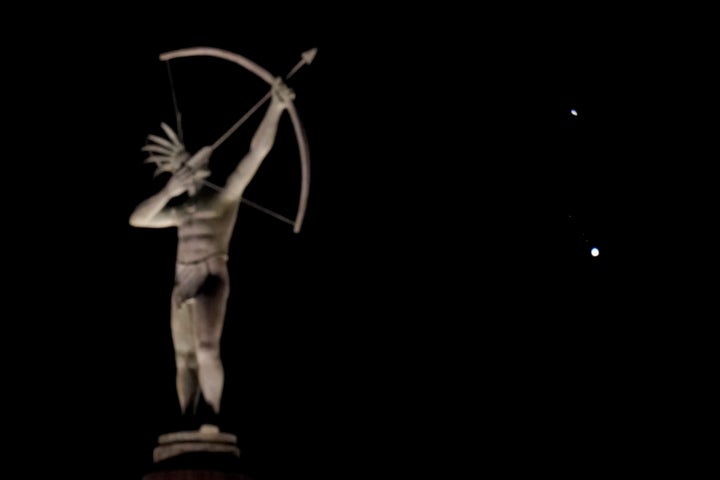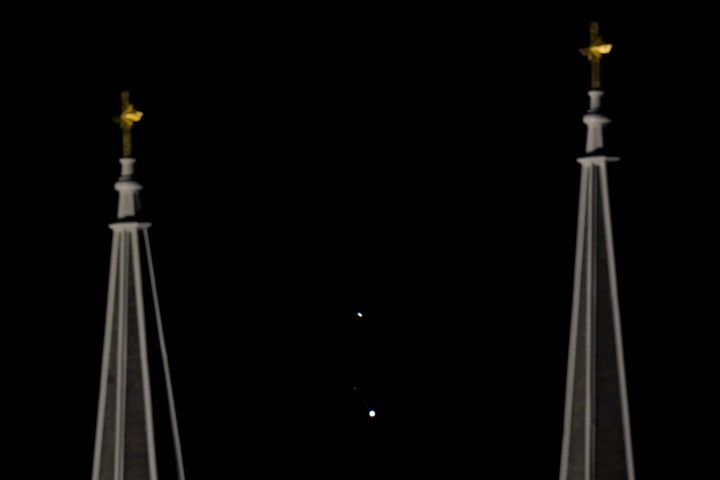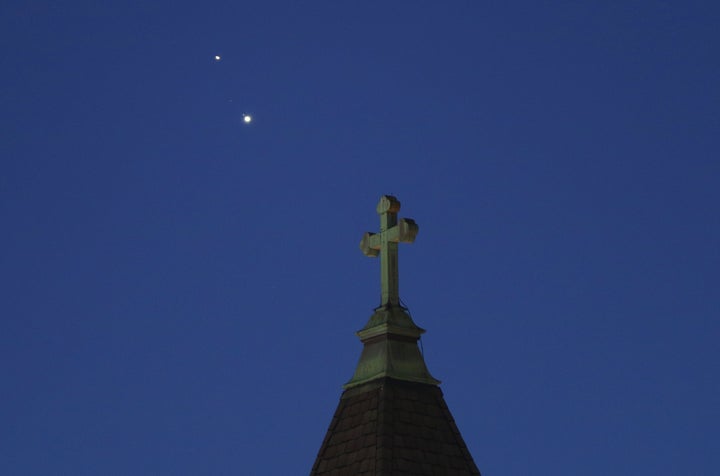Jupiter and Saturn are drawing closer to each other ahead of the Great Conjunction on Monday night.
The two largest planets in our solar system, will appear on the summer solstice to be so close from Earth that they may look like one shining star, even though they’ll actually be 450 million miles apart.
The so-called “Great Conjunction” last happened in 1623 but could not be seen from Earth. Before that, the phenomenon previously occurred on March 4, 1226.
Both Saturn and Jupiter have been visible close together in the night sky throughout 2020, while Jupiter passes its neighbour Saturn in their respective laps around the sun every 20 years.


However, this upcoming Great Conjunction will mean the gas giants will be so close in the sky that they will appear less than the diameter of a Full Moon apart.
“Alignments between these two planets are rather rare, occurring once every 20 years or so, but this conjunction is exceptionally rare because of how close the planets will appear to one another,” said Patrick Hartigan, a professor of physics and astronomy at Rice University.
“On the evening of closest approach on December 21 they will look like a double planet, separated by only 1/5th the diameter of the full moon,” Hartigan explained in a statement. “For most telescope viewers, each planet and several of their largest moons will be visible in the same field of view that evening.”
The celestial event has been christened by some as the “Christmas Star,” due to its proximity to Christmas Day.


How do I see the Great Conjunction?
In the Southern Hemisphere the planets will become visible at twilight in the western horizon not long after the sun sets.
Viewing conditions will improve the closer people are to the equator. It also depends on the weather as to how visible the conjunction will be.
“On December 21st, the two giant planets will appear just a tenth of a degree apart — that’s about the thickness of a dime held at arm’s length!” NASA recommended on its website.
Stargazers can observe the planets through a pair of binoculars, according to Professor Matthew Bate, Head of Astrophysics at Exeter University.
“If you have binoculars with the magnification of greater than about eight times, then you should be able to see some of the Galilean moons that we’ve been looking at tonight.”
“In even a small telescope, you’d see both planets at the same time in the same field of view, which is really unheard of. That’s what makes this conjunction so rare,” according to William Teets of Vanderbilt University.
“For a comparison, there was a great conjunction back in 2000, but the two planets were separated by about two full-Moon widths. This year, the orbits will bring them to where they appear to be about one-fifth of a full-Moon diameter.
“We have been encouraging folks to go out and look at these planets using just their eyes between now and December 21. You’ll actually be able to see how much they appear to move over the course of a single day,” Teets said.
Nahum Arav, a professor of physics at Virginia Tech, described the “rare event” as “special because of how bright the planets will be and how close they get to each other in the sky.”
The two planets will be “easily” seen by the naked eye, he said in a statement. “They will be very close to each other, about a fifth of the moon’s diameter. At their closest, some people will need a binocular to separate them.”
The spectacle will next reportedly occur on March 15, 2080.
After that? Well, it’s a bit of a longer wait — until the year 2400.
Never miss a thing. Sign up to HuffPost Australia’s weekly newsletter for the latest news, exclusives and guides to achieving the good life.
With files from The Associated Press